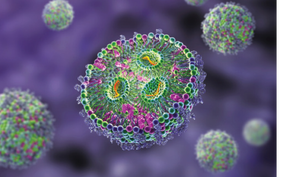November-December 2024 Featured Report
Microneedle-array patches (MAPs) represent a promising frontier in drug-delivery technology that offers a potential revolution in the administration of medications and vaccines. The technology could combine the ease of transdermal patches with the efficacy of injections, potentially offering more intuitive drug delivery for a wide range of therapeutics
(1)
.
Despite the promising potential of microneedle delivery, several challenges hinder the technology’s development and widespread market acceptance. One primary issue is the limited amount of drug that can be delivered in a single application
(2)
. For many therapeutics, consistent delivery of sufficiently large doses is essential for efficacy. So the limitation has restricted the scope of suitable drug candidates for MAPs primarily to very potent substances, such as hormones and vaccines. Overcoming the challenge of consistent large-dose delivery in a single application could expand the utility of MAP technology, broadening the scope of data available...
Successful production of lipid nanoparticles (LNPs) is predicated on a thorough understanding of critical process parameters (CPPs) and establishment of highly controlled manufacturing processes. As demand for RNA-based therapeutics and vaccines grows — exemplified by the rapid advancement of mRNA COVID-19 vaccines — continuous manufacturing has emerged as a pivotal solution for attaining robust and scalable production of nucleic-acid LNPs. An adaptable end-to-end production platform can streamline nanoparticle generation and downstream operations within a single, closed system. That setup offers significant advantages, including smaller production footprints, reduced facility and storage needs, enhanced scalability, minimized human intervention, and superior particle-size control.
The Current Landscape of Nucleic-Acid Delivery and Processing
The advent of LNP formulations marked a significant milestone in the pharmaceutical industry. In 2018, Onpattro (patisiran), a treatment for hereditary transthyretin...
In fluid dynamics,
viscosity
refers to the physical property that characterizes a fluid’s resistance to flow
(1)
. Most fluids can be classified as Newtonian or non-Newtonian
(2)
. The viscosity of a Newtonian fluid is independent of the amount of shear applied to that solution at a constant temperature (
2
). Thus, the fluid’s shear rate is directly proportional to the shear force applied
(3)
. By contrast, for non-Newtonian fluids, the fluid viscosity decreases (shear thinning) or increases (shear thickening) depending upon the level of shear applied
(3, 4)
. Most monoclonal antibody (mAb) solutions behave as Newtonian fluids, although certain concentrated mAb solutions have exhibited non-Newtonian behavior
(5)
. Usually, mAb-solution viscosity increases linearly with rising protein concentrations up to 100 mg/mL; however, for some mAb products, viscosity increases exponentially above 100 mg/mL
(6)
. Therefore, viscosity is an important physical property that must be measured during development ...
Because of their proximity to final-product administration, formulation and fill–finish (FFF) operations are critical, high-value steps within all biomanufacturing processes. The stakes are especially high for cell and gene therapies (CGTs). As is the case with monoclonal antibodies (mAbs) and related drug modalities, CGTs are too sensitive to undergo terminal sterilization in final containers. Yet therapeutic cells and viral vectors for in vivo gene delivery are too large to pass through the kinds of filters that are designed to ensure sterility for mAb drug products. Compounding those difficulties are the relatively small scales at which CGTs are manufactured and the number of manual interventions associated with small-batch processing — not to mention the logistical difficulties of vein-to-vein time for autologous cell therapies (CTs) and the cryogenic storage requirements for most cellular products.
Help is on the way for mitigating such difficulties. Peter Walters (fellow of advanced therapies) and T...
Subscribe to receive our monthly print or digital publication
Join our 70,000+ readers. And yes, it's completely free.



.jpg?width=300&auto=webp&quality=80&disable=upscale)






